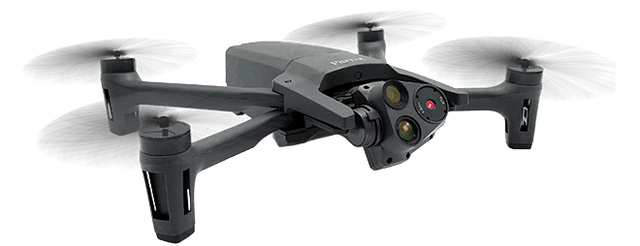Parrot on its Anafi USA microdrone and the future of military drones
French drone developer Parrot has recently seen success in the defence market with its Anafi USA micro-drone. The company’s defence and security business development head Jean-Patrice Coste tells Harry Lye about Parrot’s strategy for working on military programmes and the future of drone technology.
Before stepping into the defence market, Parrot had long been an established player in the commercial drone space. Coste says that while there were differences between the consumer market and defence, working with militaries was in many ways similar to working with large enterprise procurement programmes.
Both, he says, have long timelines and highly specific requirements that present a challenge when it comes to accelerating the adoption of new technology.
Typically, Parrot works on an 18-month development timeline, meaning multiple iterations of a drone could be developed within the typical timeline of a defence procurement programme. Coste says the company was looking to ‘synchronise’ defence procurement with development time.
He adds: “What we learned from the past year is that many of the defence departments are changing the way they source micro-drones. It's a new paradigm, in fact, they are starting to adopt new procurement practices that are changing the traditional industry.
“They [defence departments] expect a more affordable drone that is up to date and scalable in a rapid manner compared to the big and expensive drones made by the traditional defence industry.”
France’s defence procurement agency the DGA selected the French drone maker’s Anafi USA micro-drone in January. The 500g drone can transmit 4K HDR video and thermal imaging and offers inbuilt encryption. Its supply chain is free of components made in China.

// The DGA selected Parrot’s Anafi USA micro-drone in January. Credit: Parrot
Commenting on the future of the defence market, Coste says he expects to see growth in the intelligence, surveillance and reconnaissance (ISR) sector, adding: “All defence departments have an appetite for ISR missions and ISR drones. These missions are done by expensive drones, coming from the traditional defence industry, but they are vulnerable in certain operating environments and very expensive.
“They [defence departments] are looking for COTS [commercial off the shelf] products coming from consumer or professional companies, which are affordable and provide high-performance capabilities.
“With the Anafi USA, for 500g you are able to read the licence plate at 130m and detect someone up to 2km away without being detected; you cannot hear it at 300m.
Parrot’s strategy for the defence market
Looking ahead, Coste says Parrot is ‘keen’ to build on and maintain the relationship between procurement and the end-user of the drones, saying that it was important to work with them to understand requirements.
“It's very important to be really close to them. They are looking for very high-end ISR capabilities and with Anafi USA we provide a good solution in order to do ISR, which provides a safe mission to the soldier on the field,” Coste adds.
Commenting on the pace of technological advancement, Coste says that typical defence procurement programmes can last around five years, which is ‘an eternity’ in terms of technological advancement.
He adds that under traditional programmes, by the time a drone entered service it could already be either outdated or too expensive when compared to newer products.
Coste says: “We really appreciate that with GSA [Government Services Administration] in the US, they have a B2B [business-to-business] strategy.
“It was close to B2B in terms of research and development; it starts with a clear brief, a one-page requirement specification. This specification includes the final target price rather than starting with the product and figuring out the price later in the development phase.”
// Main image: A Parrot Anafi USA microdrone carries out an inspection mission. Credit: Parrot
Air